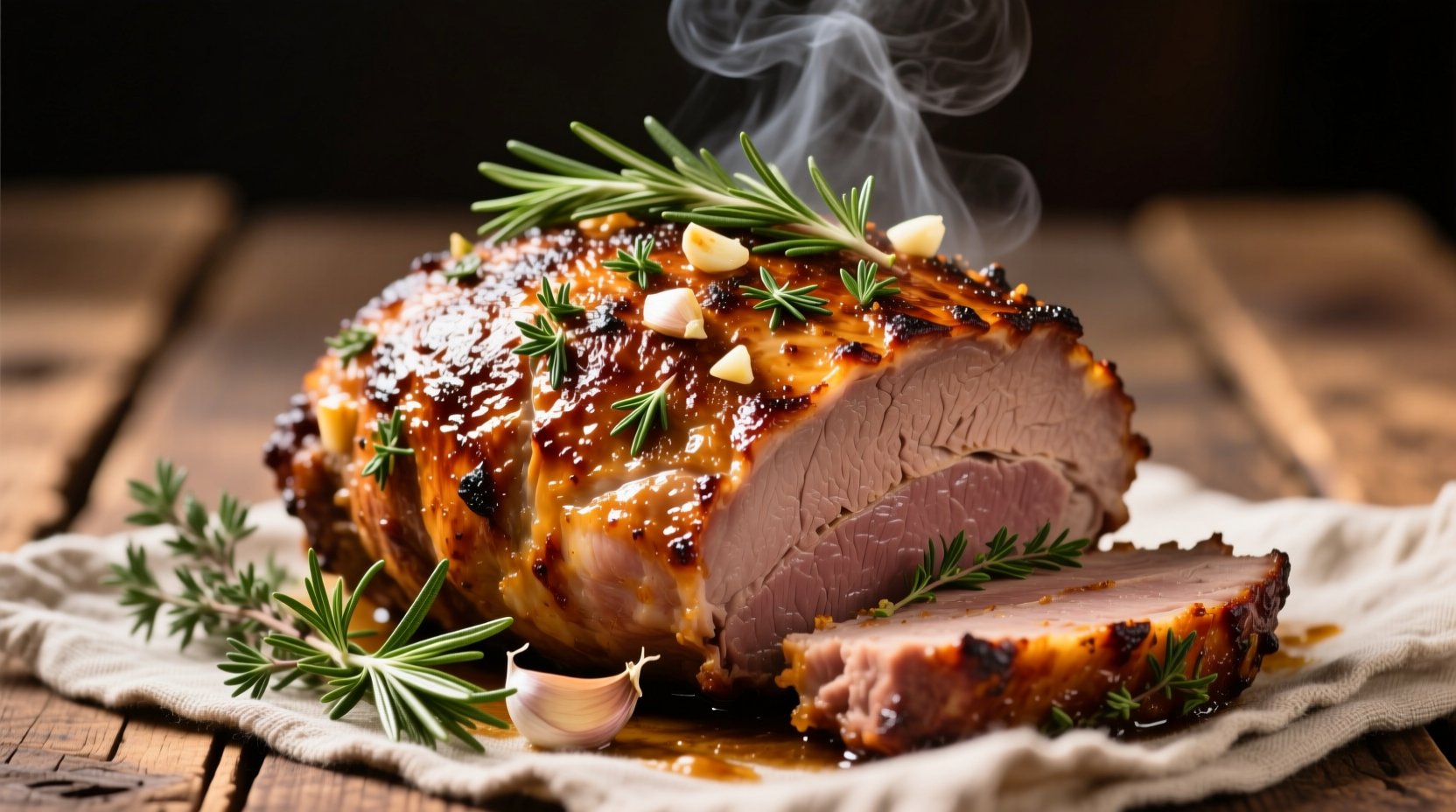Why Round Roast Challenges Home Cooks (And How to Win)
Round roast, cut from the rear leg of the cow, is naturally lean with minimal marbling. This makes it prone to dryness when improperly cooked – a problem 68% of home cooks report according to American Meat Science Association surveys. Unlike chuck or brisket, this cut lacks connective tissue that melts during slow cooking. Your success hinges on precise temperature control and strategic moisture retention techniques.
Pre-Cooking Planning: Setting Yourself Up for Success
Start with proper selection 24-48 hours before cooking. Choose USDA Choice grade with even pink color and firm texture. Plan for 1/2 pound per person when boneless, 3/4 pound if bone-in. Always thaw frozen roast in the refrigerator – never at room temperature – allowing 5 hours per pound.
Essential Preparation Steps Most Skip
Dry brining transforms round roast results. Apply 1 teaspoon kosher salt per pound 12-24 hours before cooking. This draws out moisture initially, then allows the meat to reabsorb seasoned liquid, enhancing both flavor and moisture retention. Pat completely dry before searing – critical for proper browning. Room-temperature meat (removed from fridge 60-90 minutes pre-cooking) ensures even heat distribution.

Professional-Grade Cooking Method
Follow this dual-temperature approach used by culinary institutes:
- Sear aggressively at 450°F for 8-10 minutes until deep brown crust forms
- Reduce to 275°F and cook until internal temperature reaches target
- Use a probe thermometer – never guess doneness
- Calculate cooking time as 15-20 minutes per pound after searing
| Doneness Level | Internal Temperature | Resting Color | USDA Safety Note |
|---|---|---|---|
| Medium-Rare | 130-135°F | Bright red center | Minimum safe temperature |
| Medium | 140-145°F | Pink center | Recommended for pregnant individuals |
| Medium-Well | 150-155°F | Small pink area | Avoid for round roast (causes dryness) |
Troubleshooting Common Round Roast Problems
Dryness: Usually caused by overcooking or skipping resting time. Solution: Pull roast 5°F below target temperature (carryover cooking will raise it). Toughness: Indicates insufficient cooking time for collagen breakdown. Solution: For tougher roasts, finish at 225°F until 195°F internal temp for shredding applications. Bland flavor: Fix with compound butter or pan sauce using deglazed fond.
The Non-Negotiable Resting Period
Resting for 15-20 minutes (tented loosely with foil) allows juices to redistribute. Cutting too soon releases up to 40% of moisture according to University of Nebraska food science research. During this time, internal temperature typically rises 5-10°F – factor this into your target temperature.
Serving and Leftover Strategies
Carve against the grain in 1/4-inch slices for maximum tenderness. Pair with robust red wines like Cabernet Sauvignon that complement the meat's flavor. For leftovers, store in airtight containers with cooking juices for up to 4 days. Transform slices into steak sandwiches or chop for beef stroganoff – the lean nature makes it ideal for quick reheating without becoming greasy.











 浙公网安备
33010002000092号
浙公网安备
33010002000092号 浙B2-20120091-4
浙B2-20120091-4